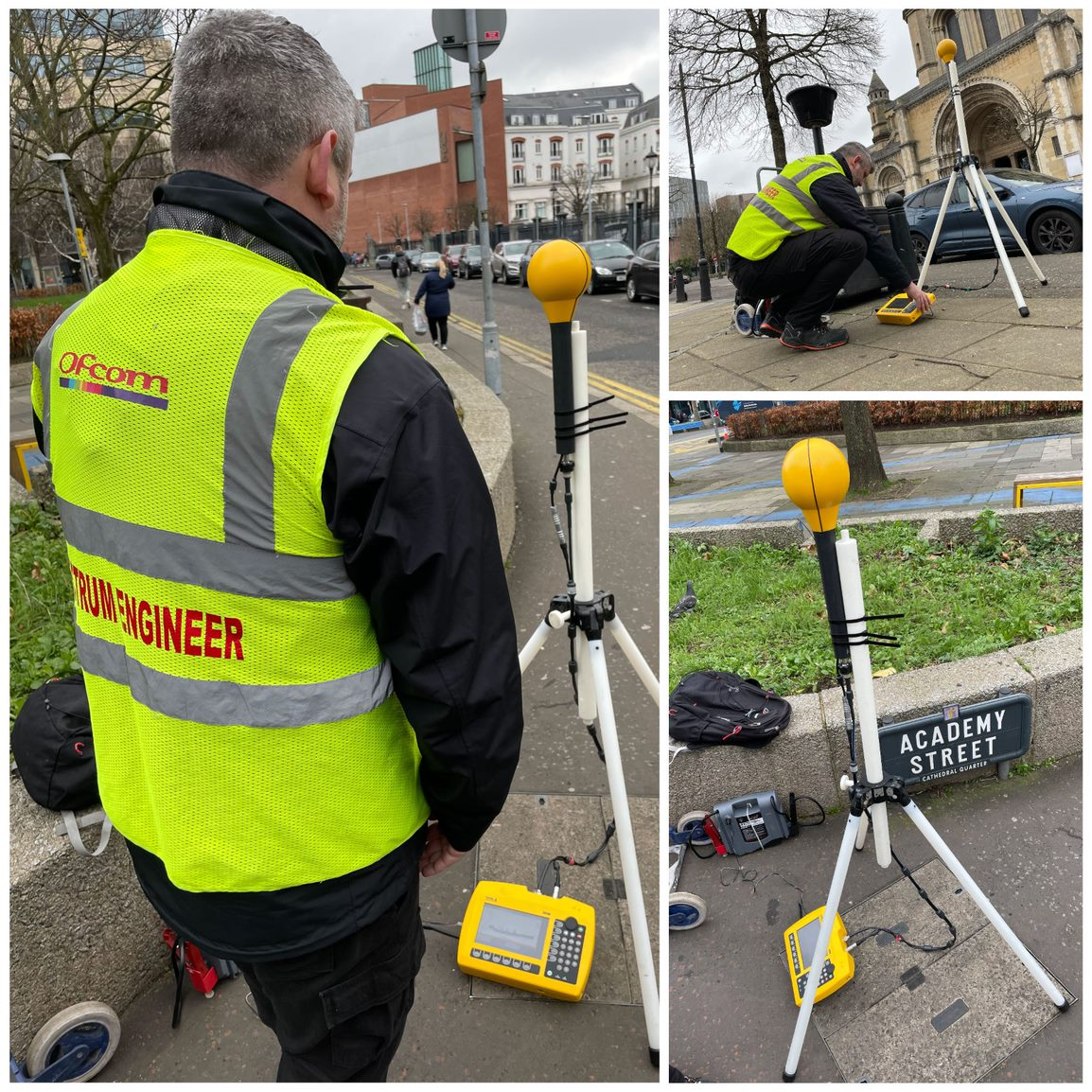

Twice a month, two of Ofcom’s spectrum engineers head into Belfast and set up their equipment to carry out a pretty important task.
Specifically, that equipment is an antenna on a tripod connected to a handbag-sized spectrum analyser. And its purpose is to measure the levels of electromagnetic radiation emitted from mobile phone masts.
Our engineers carry out tests at four locations across the city, with each test lasting for around 15 minutes.
We’ve been carrying out radio frequency electromagnetic field (EMF) measurements near mobile phone base stations for many years. The current batch of testing, which includes more than 60 sites in 20 towns and cities across the UK, is aimed specifically at measuring signals from 5G-enabled base stations and was prompted by public concerns around the mobile technology.
Guidelines for limiting EMF exposure that will provide protection against known adverse health effects are published by the International Commission on Non-Ionizing Radiation Protection (ICNIRP), which is formally recognised by the World Health Organization (WHO).
The purpose of Ofcom’s work is to confirm that 5G-enabled mobile base stations remain within these limits.
In the UK, the UK Health Security Agency (UKHSA) leads on public health matters associated with radio waves and has a statutory duty to provide advice to Government on any health effects that may be caused by EMF emissions.
On 5G, UKHSA’s view is that ‘the overall exposure is expected to remain low relative to guidelines and, as such, there should be no consequences for public health’.
Measurements carried out by Ofcom engineers, which are published on our website, have consistently shown that EMF levels near mobile phone base stations are well within the internationally agreed levels, with the highest level being approximately 7.1% of the ICNIRP reference levels and the next highest level being 1.5%.
The contribution of 5G to the total emissions level observed is currently low – the highest level Ofcom has observed so far in the bands currently used for 5G is well below the ICNIRP guidelines.
The research must stand up to rigorous scrutiny from inside and outside Ofcom, so our testing work is repetitive and detailed. There are occasional lighter moments though, with members of the public often keen to have their say. One bystander queried whether he could ‘talk to god’ using the Ofcom gear…
As the deployment of 5G networks and the take-up of 5G services is at an early stage, we’ll continue with our testing work to make sure the technology is safe for everybody.
What is spectrum?
You can’t see or feel radio spectrum. But any device that communicates wirelessly needs spectrum – such as televisions, car key fobs, baby monitors, wireless microphones and satellites. Mobile phones use spectrum to connect to a local mast so people can make calls and access the internet.
Why does Ofcom manage spectrum use?
Only a limited amount of spectrum is available, so it needs to be managed carefully. Certain bands of spectrum are also used for different purposes. For example, mobile companies use different parts of the spectrum to TV companies. So, it needs to be managed to prevent services interfering and causing disruption to people and businesses.
